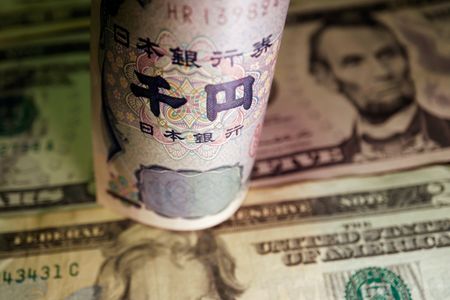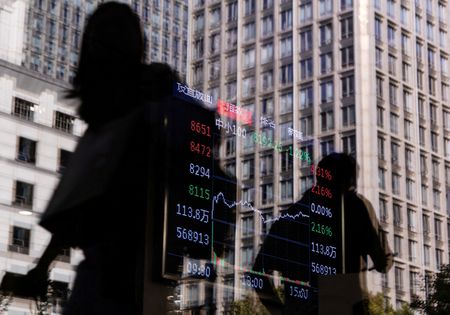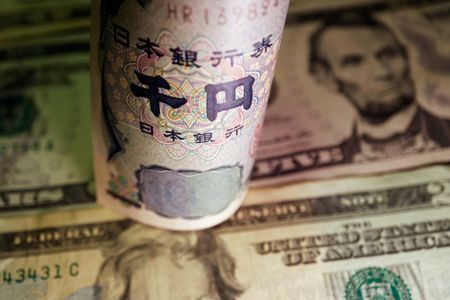By Samuel Indyk and Rae Wee
LONDON (Reuters) -The yen dropped to a nine-month low against the dollar on Wednesday, prompting more verbal attempts by Japanese officials to stem the currency’s decline, while the U.S. currency edged up as the government shutdown looked set to end.
The yen bottomed at 154.82 per dollar during European trading hours, its weakest level since February, before Japanese Finance Minister Satsuki Katayama looked to stem the slide.
Katayama said on Wednesday that it was important for currencies to move in a stable manner, reflecting fundamentals, and that there have recently been one-sided, rapid moves.
“The effect of verbal intervention is not as significant as it once was,” said Mohamad Al-Saraf, FX strategist at Danske Bank.
“For Japanese authorities to really strengthen the yen, they need to do real intervention, which could be a possibility over the next couple of months.”
The yen has fallen nearly 4.5% since the beginning of October, bruised by expected greater fiscal largesse under new Prime Minister Sanae Takaichi and more recently by buoyant risk sentiment on optimism over an imminent end to the U.S. government shutdown.
Takaichi said on Wednesday she “strongly hopes” the central bank conducts monetary policy to stably achieve its 2% inflation target driven by wage increases, rather than rising raw material costs.
The yen was similarly at its lowest since the introduction of the euro at 179.235.
U.S. GOVERNMENT SET TO REOPEN?
The Republican-controlled House of Representatives is due to vote on Wednesday afternoon on a compromise that would restore funding to government agencies and end a shutdown that started on October 1.
A likely end to the shutdown will mean the return of economic data, which should help investors and the Federal Reserve judge the state of the U.S. economy.
The dollar rose slightly on Wednesday, as it recovered some of its losses from the previous session following private employment data that showed U.S. firms shed more than 11,000 jobs a week through late October.
That knocked the dollar lower, as traders added to bets of a Fed cut in December, although markets were still only pricing around a two-in-three chance of a cut, given the lack of official data.
Some Fed officials, including Chair Jerome Powell, have signalled that a lack of data could force them to keep interest rates unchanged at next month’s meeting.
“The main driver of the dollar is what happens at the December FOMC meeting,” Danske Bank’s Al-Saraf said.
“There’s been some weakening in the labour market, but growth is still resilient and core inflation is around 3% so the Fed cannot afford to ease policy too much.”
Against a basket of currencies, the dollar rose 0.1% to 99.58.
Sterling was last down 0.2% at $1.3121, while the euro was down 0.1% at $1.1575.
The Aussie rose 0.2% to $0.6538, while the New Zealand dollar was little changed at $0.5655.
A top Australian central banker said on Wednesday that there was increasing debate about whether the current cash rate of 3.6% is restrictive enough to keep inflation in check, adding that the question is critical for the policy outlook.
(Reporting by Samuel Indyk and Rae Wee; Editing by Shri Navaratnam and Toby Chopra)











